Ancient Psychedelia: Alien Gods & Mushroom Goddesses
Online Book - Chapter 10, Page 155
Back to Online Book Mainpage / Next Page (Chapter 10, Page 156)
Other depictions which lend themselves to the symbolism of a “sacred food” include a relief from Abydos Temple, Egypt c. 1300 BC, of Sekhmet feeding the ankh to an “initiate,” (32a) and another relief from Kom Ombo Temple, Egypt c. 180-147 BC (32b). We also see the ankh being fed, in a depiction of what appears to be Isis with a mushroom on top of her head from King Tut’s tomb c. 330 BC (35a).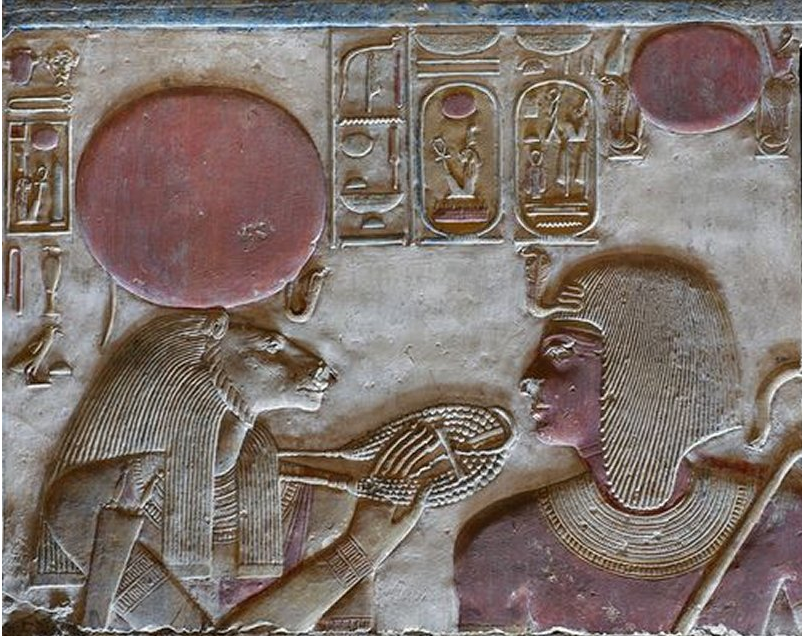 (32a) Sekhmet. Abydos Temple, Egypt c. 1300 BC 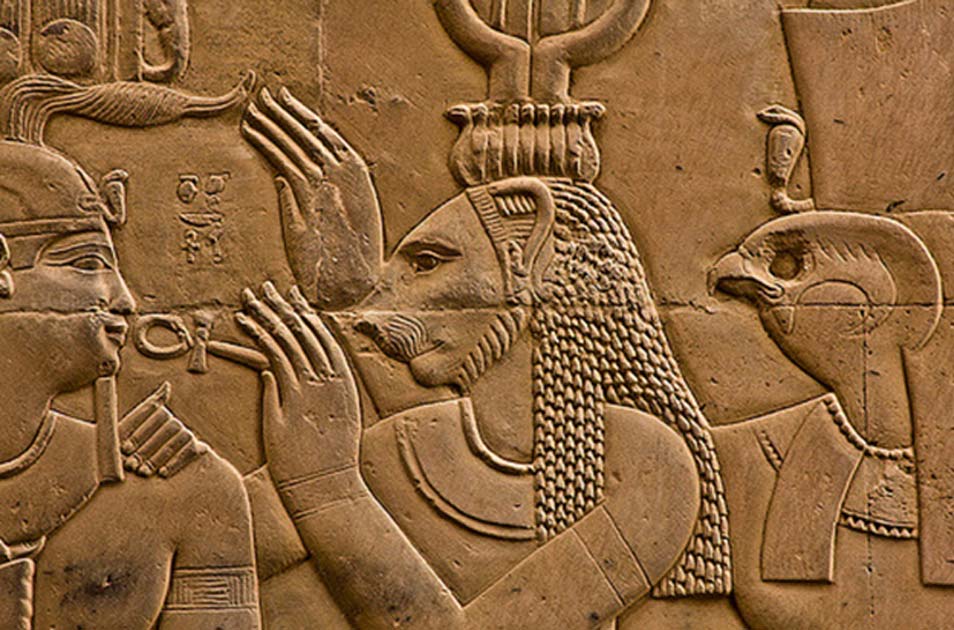 (32b) Sekhmet. Kom Ombo Temple, Egypt c. 180-147 BC 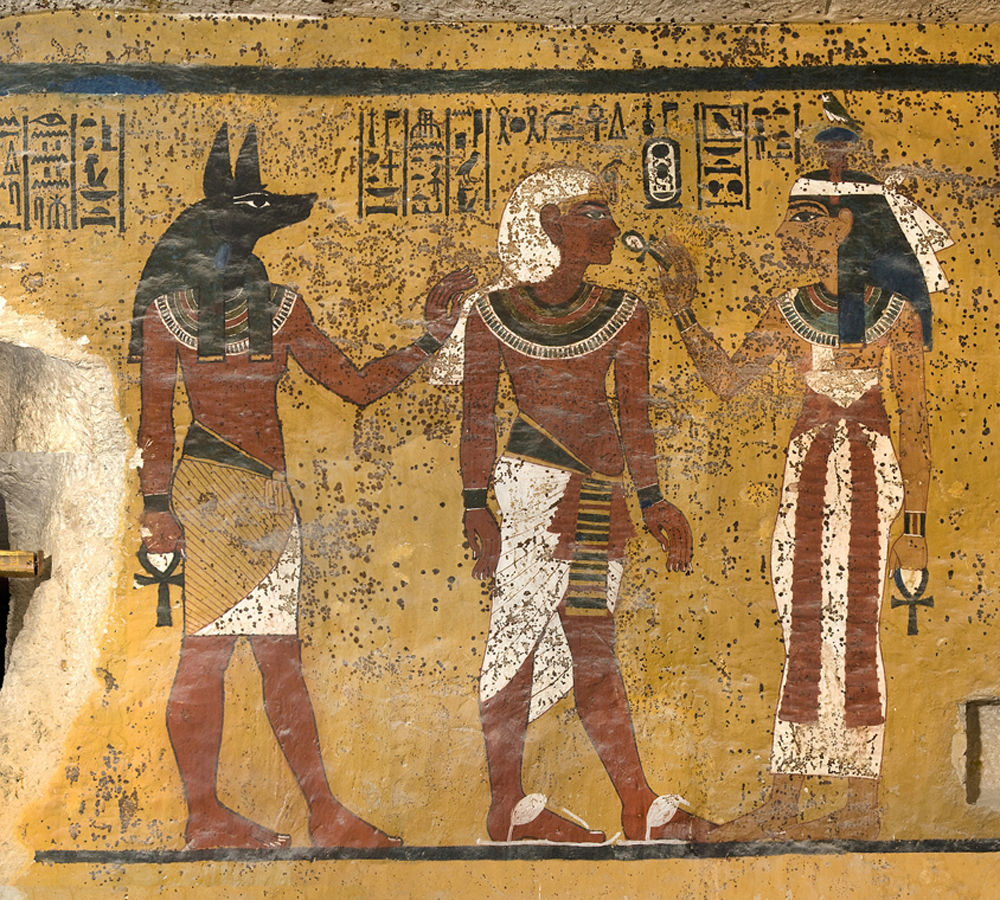 (35a) From King Tut's Tomb c. 330 BC |
Ankhs can also be depicted with a ring on the top of a wide base. One of the most interesting versions of the ankh is on the chest of Imhotep (33a), represented on a faience amulet, c. 664-535 BC (36i); also featured on a relief of Shapur II at Taq-e Bostan from the time of 309-379 AD (37a). The ankh symbol is often equated with the djed or tjet, another auspicious Egyptian symbol.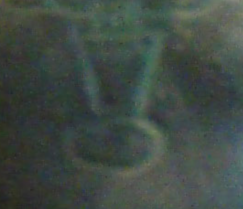 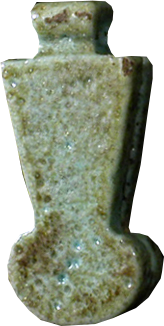 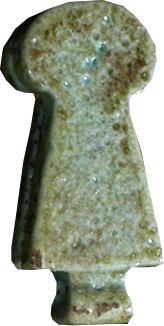 R: (36i) Egypt. Faience Ankh amulet c. 664-535 BC 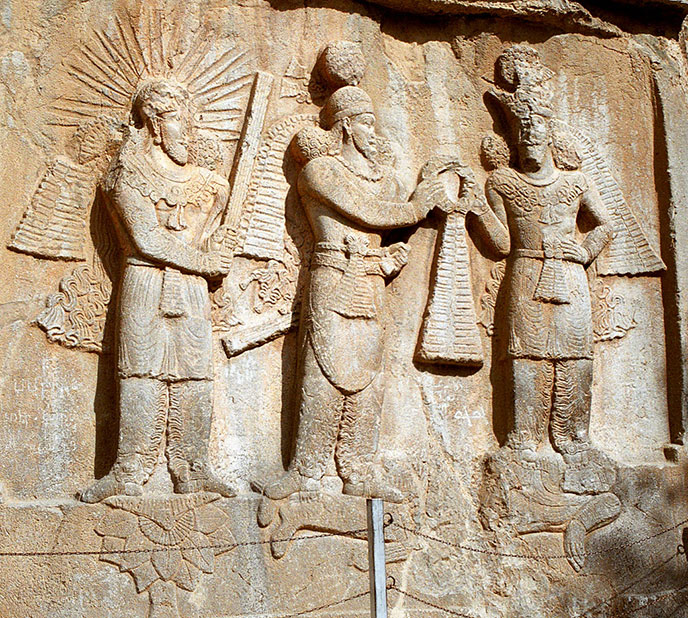 (37a) Relief of Shapur II at Taq-e Bostan, Iran c. 309-379 AD The Djed or Tjet first appears in the Predynastic Period in Egypt (c. 6000-3150 BC) and continues through the Ptolemaic Dynasty (323-30 BC) (37c, e, f, g). The djed symbol is said to stand for “stability.” The god Ptah carried a scepter which combined the djed and the Ankh and is referenced as "The Noble Djed" in ancient inscriptions (33d). (38) (38) https://www.ancient.eu/Djed/ |
Go Back to Page 154